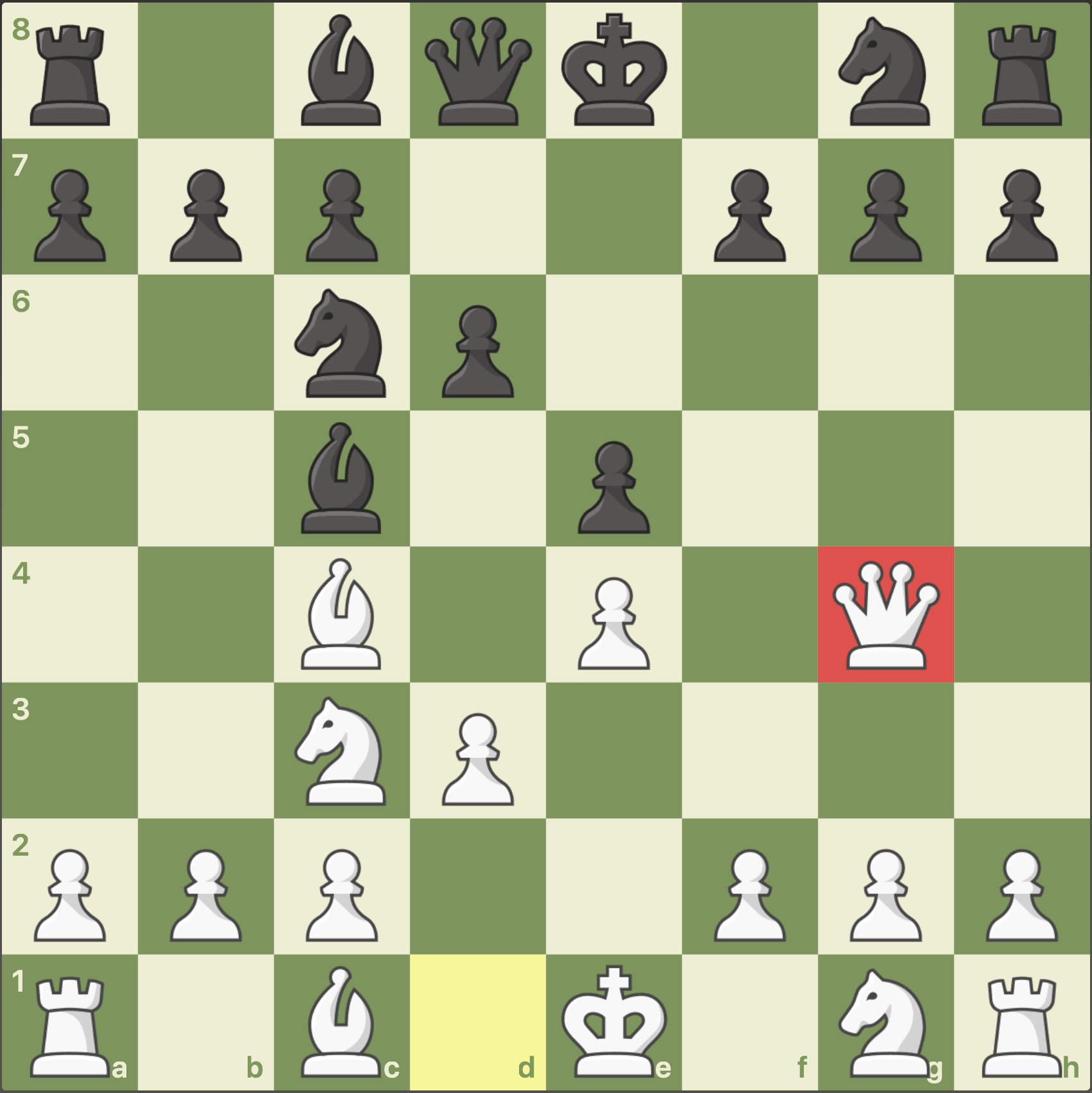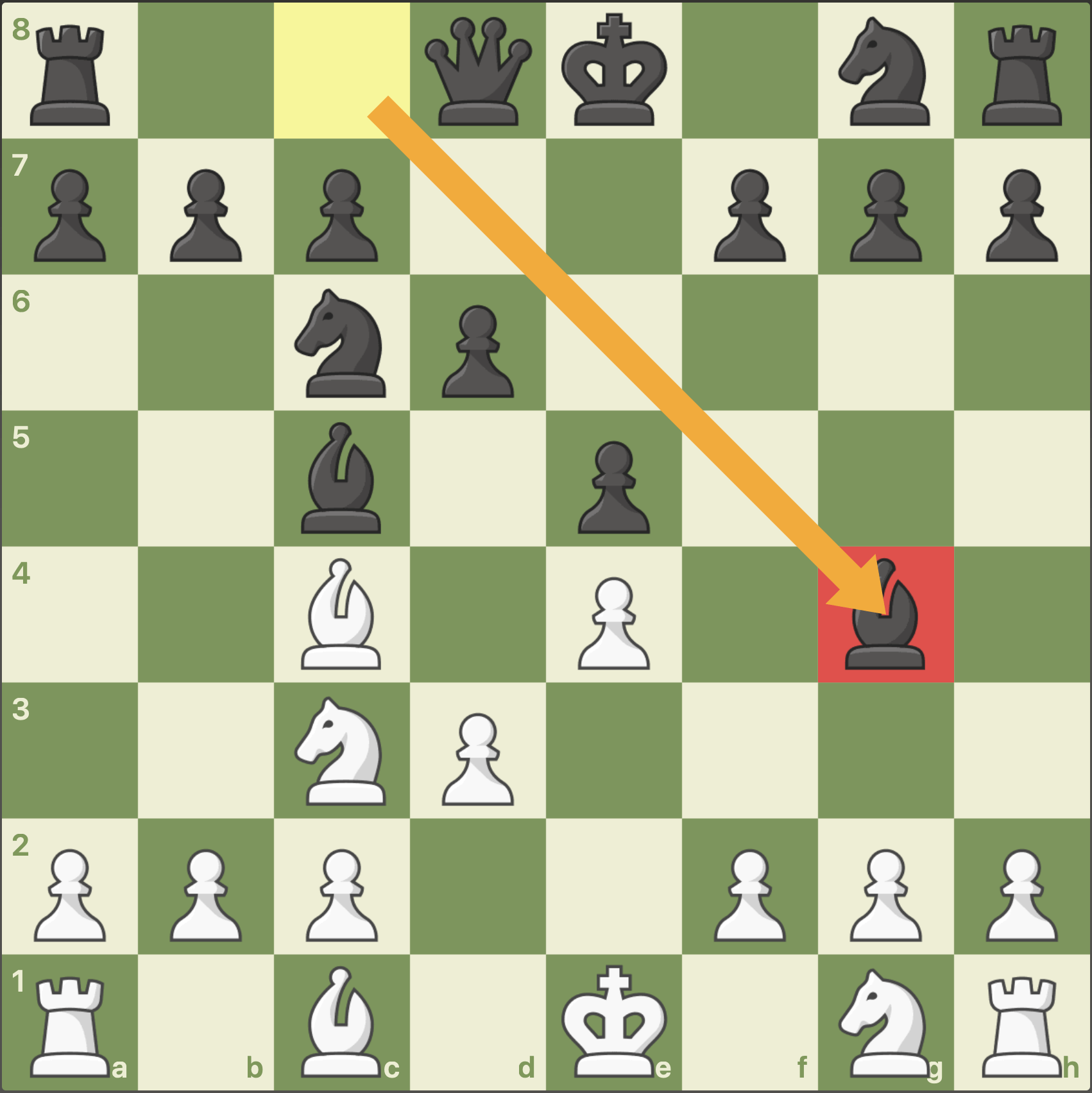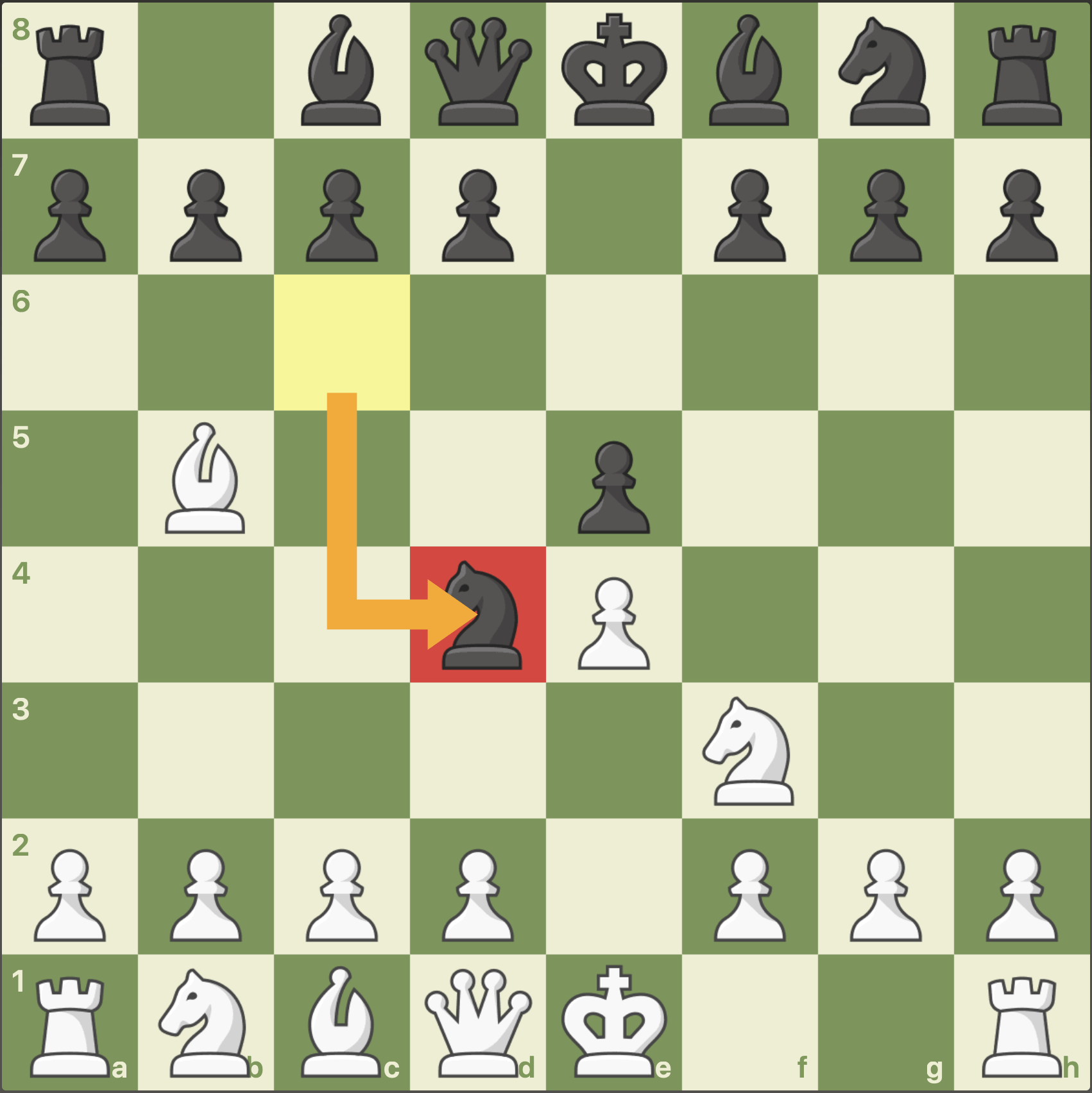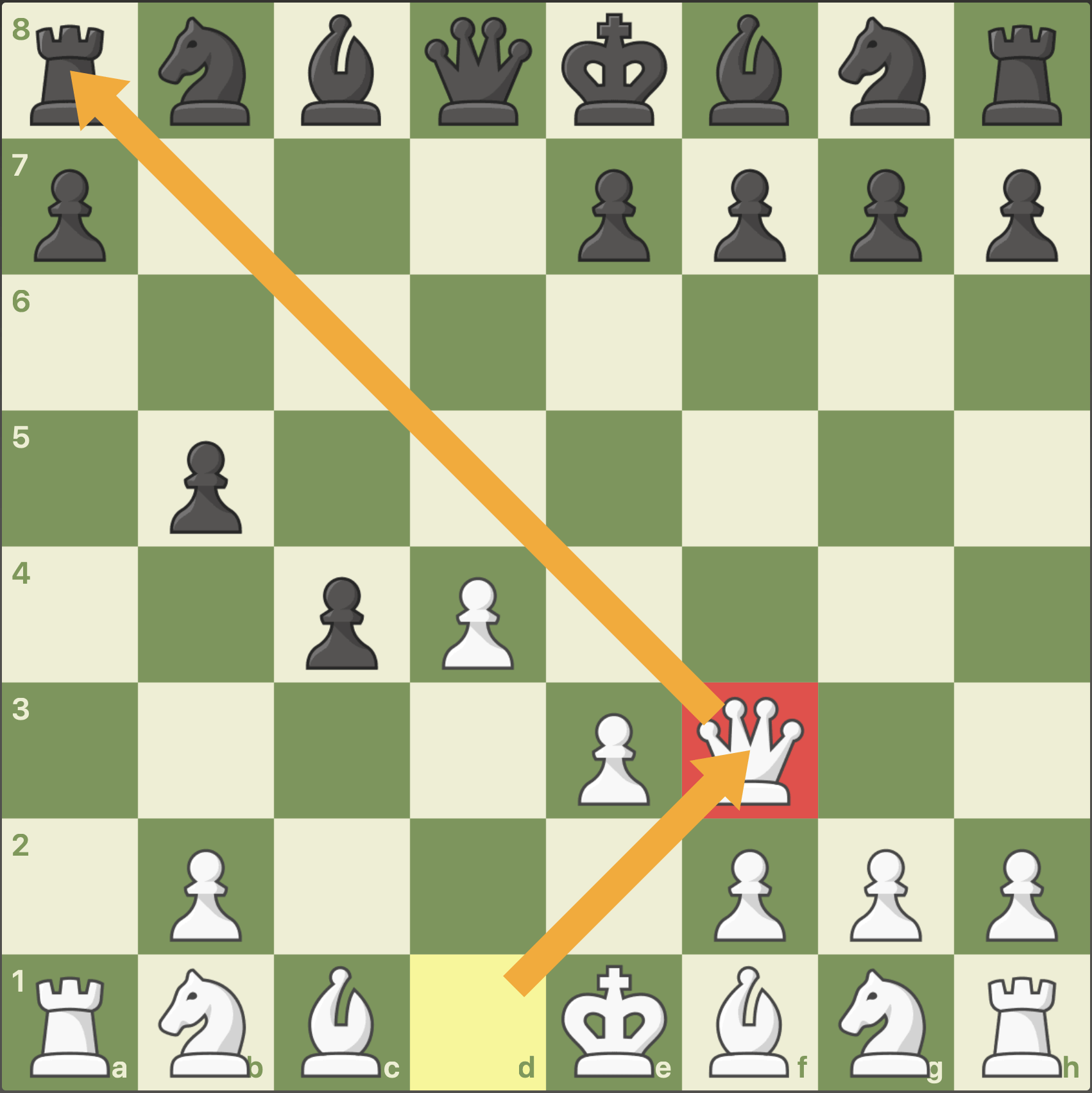
Hanging Piece
The term "hanging piece" is used quite often. You may overhear or read that a player "hung their queen," but what does it mean? Let's find out!
Here is everything you need to know about hanging pieces:
- What Is A Hanging Piece?
- How Do You Avoid Hanging A Piece?
- How Do You Recognize Hanging Pieces?
- Test
- Conclusion
What Is A Hanging Piece?
A hanging piece is a piece that is unprotected and can be captured. In other words, a hanging piece is undefended or "loose" and is attacked. A piece that can be captured is also known as being "en prise" (a synonym for being exposed to capture). In the diagram below, White has just played Qg4. The queen on g4 is hanging because it is unprotected and Black's bishop on c8 can capture it.

After Black captures the queen, it can be said, "White has hung their queen."

It is very important to understand what a hanging piece is. Why? So you can try to avoid hanging pieces, and also so you can recognize your opponent's hanging pieces (to attack them)! So how does one avoid hanging pieces?
How Do You Avoid Hanging A Piece?
A wise and strong player once said, "If all of your pieces are protected, you should never hang a piece!" In all seriousness, it is that simple. Many beginner players and advanced beginners hang pieces very often. Learning how to reduce the number of times that you hang a piece is a great step toward improving your overall chess!
If all of your pieces are protected, you should never hang a piece!
— Anonymous
Avoiding hanging pieces is not something that will happen overnight. A simple step to start practicing is to look at the square where you are going to place your piece and make sure it is safe—the chess equivalent to "Look before you leap!"
Gaining practical experience and practice recognizing hanging pieces while having most of your pieces protected is a proven method for chess improvement. So, how do you recognize a hanging piece?
How Do You Recognize Hanging Pieces?
Recognizing hanging pieces can be as simple as identifying a piece and looking to see if it is protected. Board awareness, or being aware of the details of the whole board, is a term connected with the ability to recognize hanging pieces quickly. Let's try a few examples. In the following position, Black has just played 3...Nd4. Are any pieces hanging in this position?

The answer is yes because White's bishop on b5 is both unprotected and attacked! It is sometimes helpful first to recognize what pieces are unprotected in a position. In the following position, only the rooks are unprotected.

After you have recognized that a piece is unprotected, you can then ask yourself, "Is there a way to attack this piece?" In the position above, there is a way for White to attack one of the rooks—can you find it? The answer is Qf3!

Qf3 attacks the rook on a8! No matter how Black replies, they will lose at least a piece.
Test
Now that you know what a hanging piece is and how to recognize unprotected pieces, let's put your new skills to the test! In the following position, can you recognize the hanging piece?

Yes! Black's bishop on b4 is unprotected! Now let's take it a step further. Is there a way to win this unprotected piece? Simply attacking it with a2-a3 or Qb3 will allow Black to move the bishop away. Is there a way to attack the bishop and put Black's king in check?

Yes! Qa4+ puts the black king in check and attacks the bishop on b4! This move wins the bishop on b4—very good!

This is known as a double attack (as both the king and bishop are attacked with one move).
Conclusion
You now know what a hanging piece is, how to avoid hanging pieces, and how to recognize them! Enjoy using this information in your own games, and may you capture many hanging pieces!








